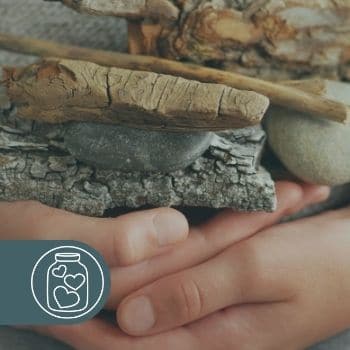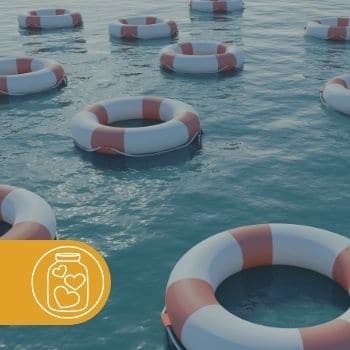Preservation Station Plan
Become a Preservation Whiz by following this 21 day plan focused on learning and implementing the steps you’ll need to preserve and archive your family treasures. During the next 21 days, you’ll learn the best methods for planning your projects, digitizing your various treasures, and archiving in an effective and lasting manner so your family’s memorabilia can be enjoyed and discovered for generations to come. We’ll make it easy and fun to follow along for the next 21 days. Come join us!
This plan was prepared in partnership with preservation expert, Melissa Barker the Archive Lady. Learn more about these important principles by visiting Melissa Barker’s blog: A Genealogist in the Archives
Jump ahead to the day you’d like to see.
Be sure to take the pre experiment survey before you start and come back and complete the post experiment survey when you are done.
Day 1

Long Lost Projects
In order for you to achieve preservation confidence, the next 21 days are going to be focused on you working through some personal projects. Think about the projects you have been meaning to do. Some project possibilities you could consider include:
- Focus on one family or family member. This would include gathering all you have pertaining to that family, and then digitizing and organizing that family’s library.
- You could start with a focus on a specific type of media you would like to preserve (i.e. slides, photos, cassette tapes).
- Maybe you just want to start gathering all the different things around your house that you would like to preserve and stick them in a box to start your own personal preservation library.
Whichever you choose, write down your goal for this project today, tell someone else about the goal, and maybe even invite them to participate with you. Everything’s better with friends and family. Use our free Preservation Station Worksheets to help you with this step. Then whip out that box and get ready to dig in now that you’re committed!
Day 2

Preservation Principles
“Less is more! The less you do to a document, photograph, or artifact to preserve it, the better!” -Melissa Barker
Okay, before you dirty your hands in that dusty old box, let’s talk a little bit about some basic preservation principles that you’ll want to keep in mind as you begin your journey of becoming a preservation whiz.
First, Do No Harm! We can borrow from our medical professionals, right?! We want to take some serious care when it comes to our family’s precious possessions and memories. So, be sure to not do anything to your genealogical records that you can’t undo. Next, use Archival Materials from a reputable archival store that are acid free, lignin free, and (if possible) pass the P.A.T. (Photographic Activity Test). And always remember to store them in the Right Environment, which would be a cool, dark and dry place where the temperatures and humidity levels are low and do not fluctuate. See Melissa Barker’s blog post “Where to Get Archival Materials” to learn more.
Day 3

Save those Memories: Why
Let’s start with memories! Why is preserving our memories important? We’d love to hear your thoughts, so join in the conversation on our social channels
A few reasons you may want to consider could be that memories fade with time, and stories that aren’t recorded eventually disappear. Whether they’re your memories or memories from relatives, once the person who holds the memories is gone, so are the experiences, the lessons learned, the strength gained, and the potential for future connections. Why are you working on this preservation project?
Write down your “why” today. Use our free Preservation Station Worksheets to help you with this step.
Tip: This project is focused on exploring the psychological benefits of family connections. Some of the benefits that are often referenced are healing and forgiveness, deeper family connections, resilience, intellectual strength, and a stronger sense of belonging and of self. You may want to spend some time today exploring our Evidence page to see why preserving those memories is beneficial.
Day 4

Save those Memories: How
Start by identifying which memories you want to record, and then determine how you want to record them. Write it down – whose memories and which memories are you going to start preserving today?
Use our free Preservation Station Worksheets to help you with this process. There are a lot of unique tools designed to help you save both your own and your family’s memories. Now that you’ve identified where to start, determine how you are going to capture those memories. There are some great and unique tools designed to help you capture your memories from prompt tools to games, using digital applications or pen and paper; there are tools for everyone. See our blog post “What You Need to Know About Saving Memories” for details about many of the ideas. Which tools are you going to use?
Day 5

Save those Memories: Workday
“Memory is a way of telling you what’s important to you.” – Salman Rushdie
Today is the day–use this workday to record one of your own memories. Either write down one of your own experiences or write down the details of a story that was shared with you. If you choose to not write, use one of the tools we discussed yesterday to record the story digitally. No story or memory is too small, so write them all!
Day 6

Tangible Treasures: Why
Preserving our paper trail would include everything from documents, records, awards, journals, heirlooms, photos, scrapbooks, and would even include slides and other tangible items. Share your answer with us on our social channels: why are some tangible items so valuable?
Consider this: a lot of details can be preserved in each of these tangible treasures, and a lot of connections can occur when we hold, handle, or see an item that our family members owned, wrote, created, or used to document their lives. Considering your
project, select the items you’d like to preserve during this “Tangible Treasures” segment, and separate them so that you’re ready to preserve.
Day 7

Tangible Treasures: How
Explore what kind of equipment you might need to complete this preservation project and make a plan for how you’re going to access it. Use our free Preservation Station Worksheets to help you with this process. In order to preserve these tangible items, first consider that you’ll want to archive the original records. If you have a copy, try to track down an original so you can archive the best possible version. Digitize the item for preservation by using equipment appropriate for the item you are digitizing. There are photo scanners, slide scanners, light boxes for capturing heirlooms, and most of us have a photo scanner built into our printers at home. There are scanners available that can digitize nearly every kind of media. See our blog post “Scanning Your Stuff: Top 10 tips For Beginners” to learn more.
Tip: Consider donating copies of original records to an archive locally where your ancestors lived. Be sure to call and talk to the archivist about your donation.
Day 8

Tangible Treasures: Workday
Today we’re going to PICK 10. Pick 10 photos, 10 documents, or 10 Heirlooms from your project to digitize. Use your own equipment or use one of the resources we mentioned in “Scanning Your Stuff: Top 10 tips For Beginners” blog post. Digitize the 10 items you selected today. Be sure to follow the proper techniques for using the equipment in order to get the best quality out of your scans.
Tip: Share something you scanned today with a family member or on social media. Use our Family Photo Heirloom MMM to make it fun and shareable.
Day 9

Awe Inspiring Audio: Why
Oral histories can be an incredible way to preserve not only the story itself but also the voice of the storyteller, the tone and emotion related to the story, and the personalities of the characters in the story. The experience can be a richer experience when we audibly hear something from our relatives or ancestors. However, if not preserved correctly, even recordings made with the best of intentions can be lost. Today, identify one audio recording that your family has. Knowing that many audio media systems deteriorate and become obsolete, does it need to be updated?
Tip: If your family doesn’t have any audio recordings, make one by identifying one story, joke, musical number, or interaction you’d like to audibly capture.
Day 10

Awe Inspiring Audio: How
Option One: Updating Previously Recorded Audio Files–You may already have some old audio files on disc, tape, or other older media types that deteriorate and become obsolete. You will want to digitize those files into a modern media file so that they can be copied, shared, and backed up more easily. Many devices can be purchased online to convert these media types to digital files. You can also see our “Scanning Your Stuff: Top 10 tips For Beginners” blog post to learn more. What type of audio files could you preserve better? List the items you would like to preserve, and then identify what equipment you’re going to need in order to better preserve these files.
Option Two: Creating Your Own Audio Files–Capturing audio can be as easy as using the audio recording app on your phone, but we recommend investing a little time into becoming familiar with some basic strategies for a better quality recording. Consider things like which mic to use, what the right environment for recording is, and how to set up the microphone in order to get the best quality recording.
Day 11

Awe Inspiring Audio: Workday
Option One: Workdays are the best! Today take the audio file you’ve selected and use your newly learned preservation skills to either update the audio files or record your treasured memories.
Option Two: If you’re a bit overwhelmed try our Speed Interview Idea Generator and your audio recorder on your phone for a quick, fun, and easy way to capture some of your unique memories.
Day 12

Moving Picture Magic: Why
If a picture is worth a thousand words, then what is a moving picture worth? Share your answer with us on our social channels: Why are videos of your family so special? Why should we go to the lengths required to preserve them?
A few things to consider: having video footage of your loved ones adds a whole new level of connection. You can see their personality, their mannerisms, their familial similarities, and even their flaws which connects them to us in an even deeper way. Any moving picture footage you have now or that you choose to create and preserve can be a priceless piece of preserving your family. As in all tangible heirlooms, there are also
risks associated with natural disasters and other mishaps;,but film is one of the most vulnerable types of media as the risk of deterioration is significantly higher than other media types. Film loses its quality with age, so it should be a priority when it comes to our preservation planning. Select one video that you’d like to preserve during this segment of our plan.
Day 13

Moving Picture Magic: How
With so many different media types for film and video, there are a lot of different approaches to digitization. The process is:
- Identify the footage you want to preserve
- Organize it according to media type
- Identify the best method for digitization
Remember to consider the old silent home movies that grandpa made using reel to reel and the VHS tapes of varying sizes that were made throughout the following generations. For more recent media like VHS, you can purchase a device that connects to your computer with a program that will allow you to digitize in your home, but the older the media type is, the more likely you are to be better off using a professional service to meet all those different media needs. See “Scanning Your Stuff: Top 10 tips For Beginners” blog post to learn more.What type of video files could you preserve better? Identify what equipment you’re going to need.
Tip: When collecting your videos, ask family members if they have home movies or other family video treasures.
Day 14

Moving Picture Magic: Workday
Hallelujah, a workday! Digitize a video. Today, take one family video and ship it off to be digitized, record it yourself using your home computer, or video record a loved one sharing a story or a loved one’s event. Be sure to label and tag the video when you upload it to your computer. For older videos, use your relatives to help you identify people, places, and events in the video.
Day 15

Achieving Archival Bliss: Why
Now what?!? You’ve got loads of digital files, you’ve preserved your memories, isn’t that enough? Share your answer with us on our social channels: Why do you think it is important to organize and archive those digitized files now?
A few things to consider: do you feel a bit overwhelmed when you think of the files on your computer, specifically when you think of your digital archive of family memorabilia? Imagine what your relatives and posterity will feel when they see it. On the other hand, imagine if they opened up those files and they were all packaged in an easy to follow, organized manner so that they could explore, learn, and access the files easily for their own uses. When we apply a few basic archiving principles, we can get those files clean, organized, and not only sharable but explorable and discoverable for others. If you can achieve archival bliss with your library of memories, you will be leaving a gift of legacy along with all of the associated psychological benefits of family connection. Today, make a list of the different folders where your memorabilia is stored and where they are found.
Day 16

Achieving Archival Bliss: How
Archiving can seem like a scary task to those of us just starting out, but it doesn’t have to be. Implementing a simple basic archival system for our family’s treasures can be as simple as applying a couple steps. Things to consider:
- You’ll want to implement an organizational system with consistent naming, tagging, and filing. Your folders should be consistent and logical.
- You’ll want to choose your system of backup. There are many cloud based storages and various storage devices, but the industry standard is to follow the 3-2-1 rule when it comes to storing those precious files.
Start by determining your storage system: first your naming system and second your filing system. Bonus points if you create your first folders today so you have a head start tomorrow. See a few examples on this blog post “Organizing Digital Files: The Beginners Guide”
Day 17

Achieving Archival Bliss: Workday
Hooray, it’s another workday! Today you’re going to start implementing your new organization system. Practice makes perfect, so by the end of this project you’ll be a true Preservation Whiz! Pick the first folder you listed on Day 15, and let’s work through getting the individual files named correctly, tagged correctly, and then filed correctly. A few things to keep in mind as you go:
- Evaluate record conditions and determine if the records need any conservation.
- Remember to remove any metal like paper clips and staples.
- Handle photographs with gloves.
Bonus points if you share a screenshot with us of your first finished folder. Others might not understand how accomplished you’ll feel, but we’ll all be able to relate and congratulate each other.
Enjoying this 21 Day Plan?
Day 18

Your Personal Preservation Plan: What
The best way to achieve archival bliss, as we have been learning, is to establish your own personal preservation plan. Your personal preservation plan is the dependable automated workflow that you use every time you find or receive a new family treasure worth preserving. It includes steps for digitizing, organizing, and more. . . as well as the peace of mind that comes with a structured workflow.
Hint: Does that sound a bit overwhelming? Well, we took the guesswork out for you! Download our My Personal Preservation Workbook & Planner today!
Day 19

Your Personal Preservation Plan: Why
By now you have a pretty good understanding of why the preservation of your collection of memorabilia is important, but share with us on social media: Why do you think we should create a Personal Preservation Plan?
The loads of files on our personal computers can be overwhelming, but if we establish our Personal Preservation Plan first, then we can keep track of our progress, prioritize certain projects, and progress steadily even if the time we can commit to the project is limited. A little at a time makes a lot of progress. It’s also the way that you can ensure that the legacy that you want to leave behind is there. You may find that you don’t find some things as important as you once did, and others you find more important. Your Personal Preservation Plan will help you know exactly how to tackle each item as it comes. Commit today to establishing your own Personal Preservation Plan. Use our My Personal Preservation Workbook & Planner or create a fresh document that you can start building tomorrow.
Day 20

Your Personal Preservation Plan: How
Lucky you! Just doing this 21 day plan, you’ve already started your Personal Preservation Plan. So what are these simple steps to follow?
- Determine your organization and file storage plan. Check that one off from Day 16.
- List your projects in order of priority. Use your list from Day 15, as well as any more that come to mind, to determine your project priorities.
Tip: Keep in mind family members who are aging and might not be around long, items that are at high risk of deterioration, and other points you’ve learned in the last 19 days.
- Set some deadlines for yourself. We work better when we have a goal in mind.
- Determine what you’ll work on in each session. Each time you work on your preservation project, determine how much you can accomplish that day, and then what you’d like to work on next time.
- Set up notifications. When you finish a work session, set a notification for the next time you’ll work. Calendaring a specific day of the week or month could work great.
Tip: Don’t ever dismiss your Personal Preservation Plan appointments; just reschedule so it doesn’t slip through the cracks.
Today set up your Personal Preservation Plan; start compiling your own or get our My Personal Preservation Workbook & Planner to help you easily start creating your plan today.
Day 21

Your Personal Preservation Plan: Workday
Seize the workday! Use today to continue setting up your Personal Preservation Plan. If you need input, ideas, or help thinking through it, reach out to us on social media, we can do this together!
And if you’re the over-achiever in the group and you’re already done writing your plan–GREAT! Go ahead and start working on your first project.
Tip: Share your progress with us! We’d love to hear how it’s going and when you need some support along the way. (insert social links)



